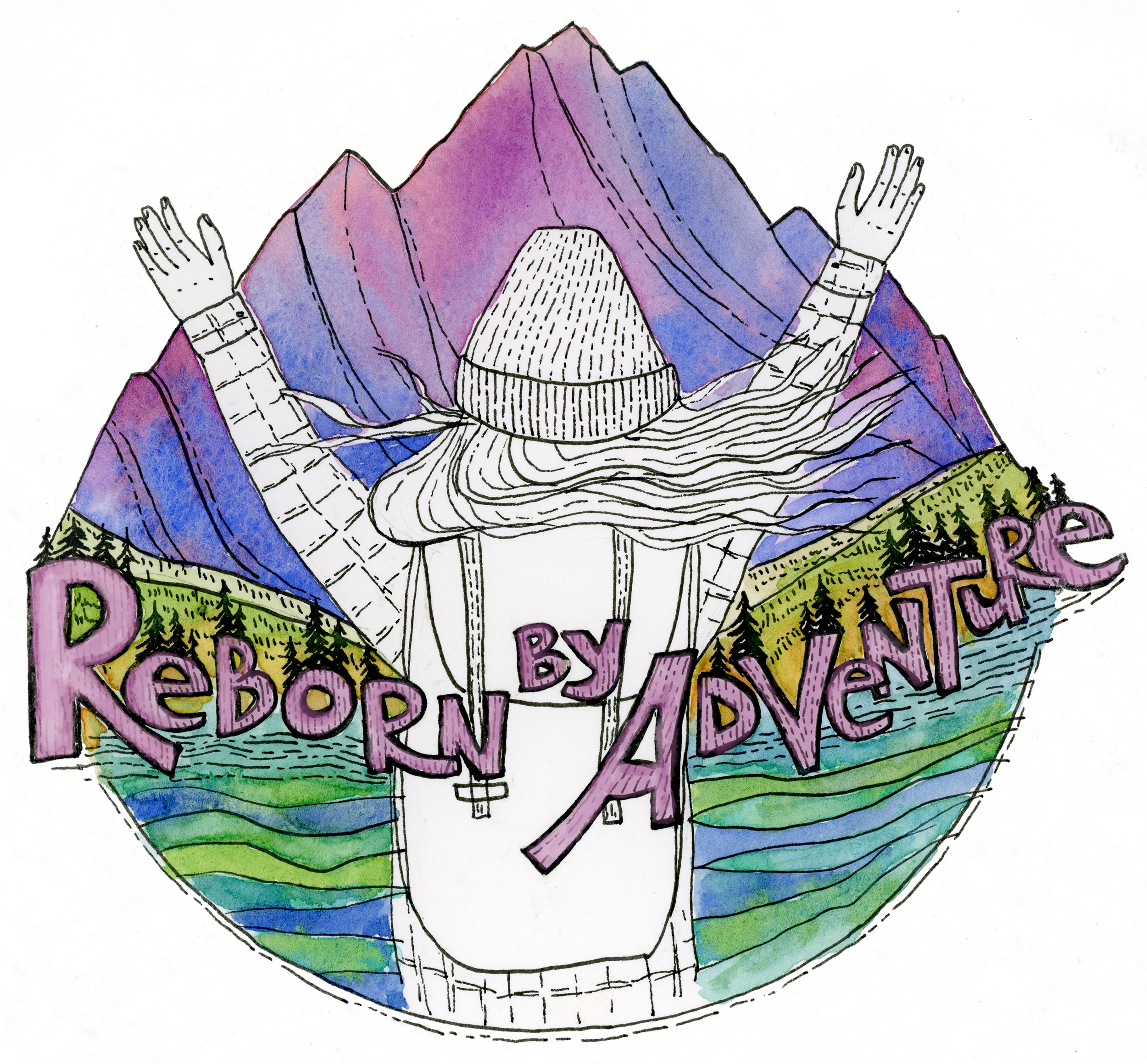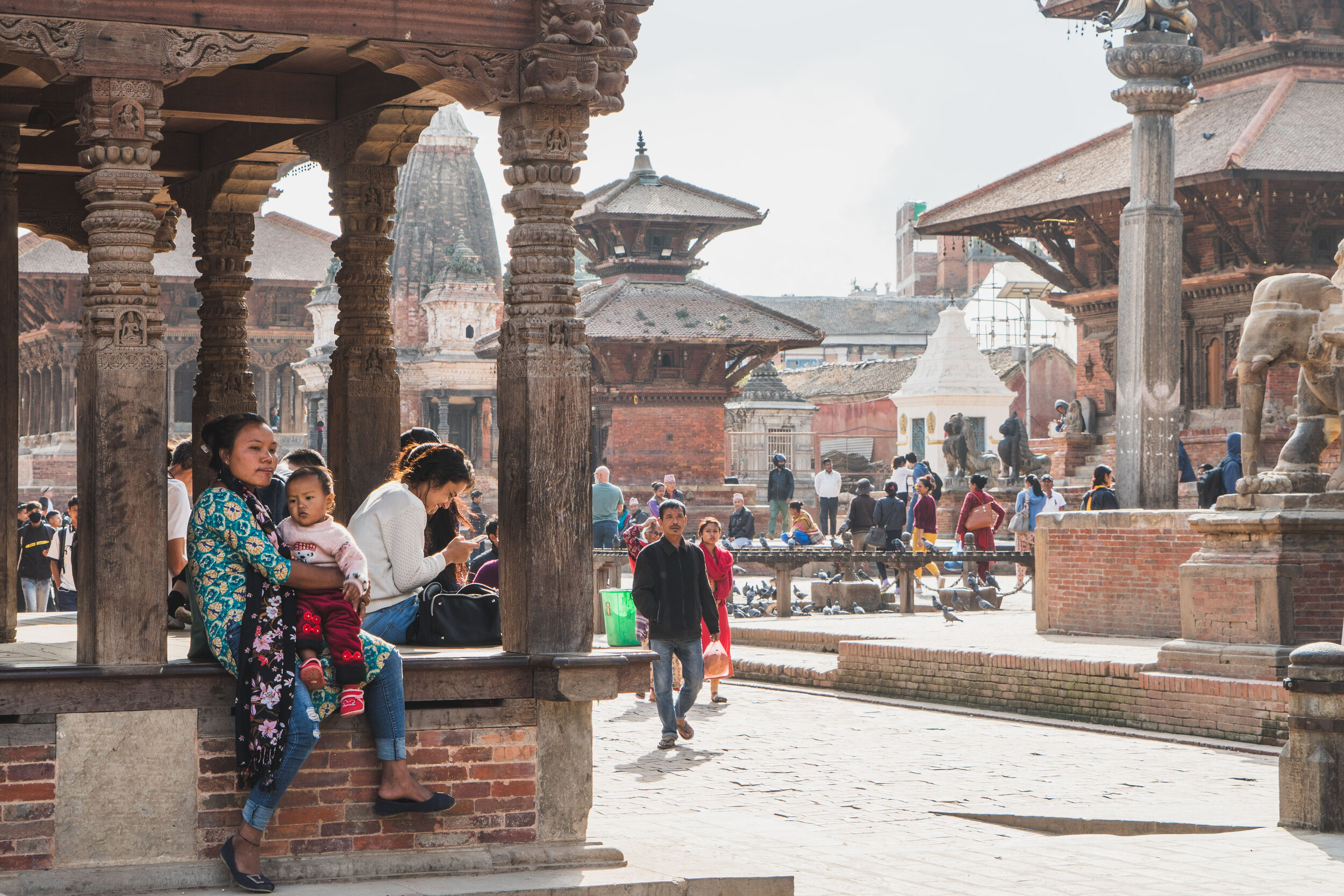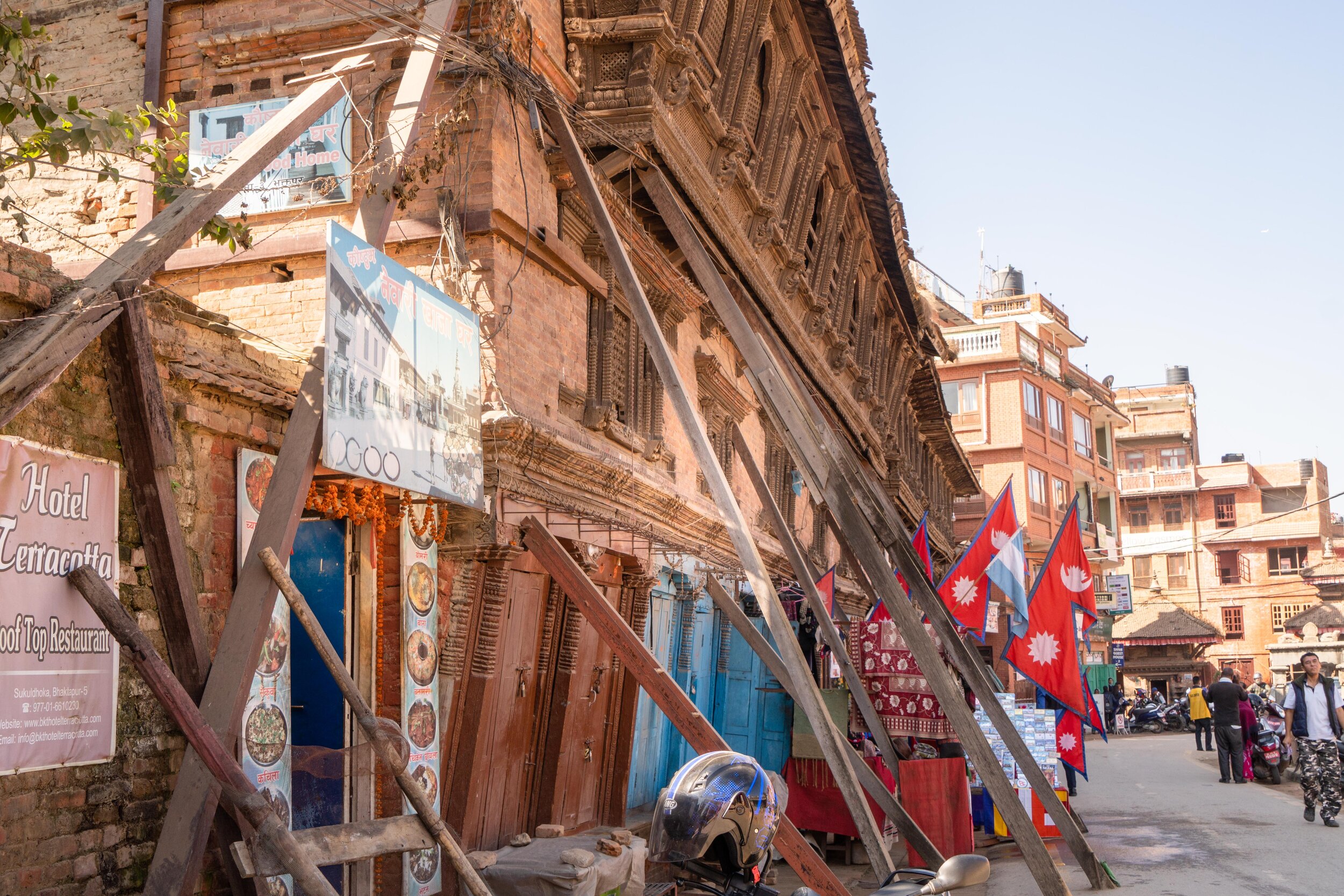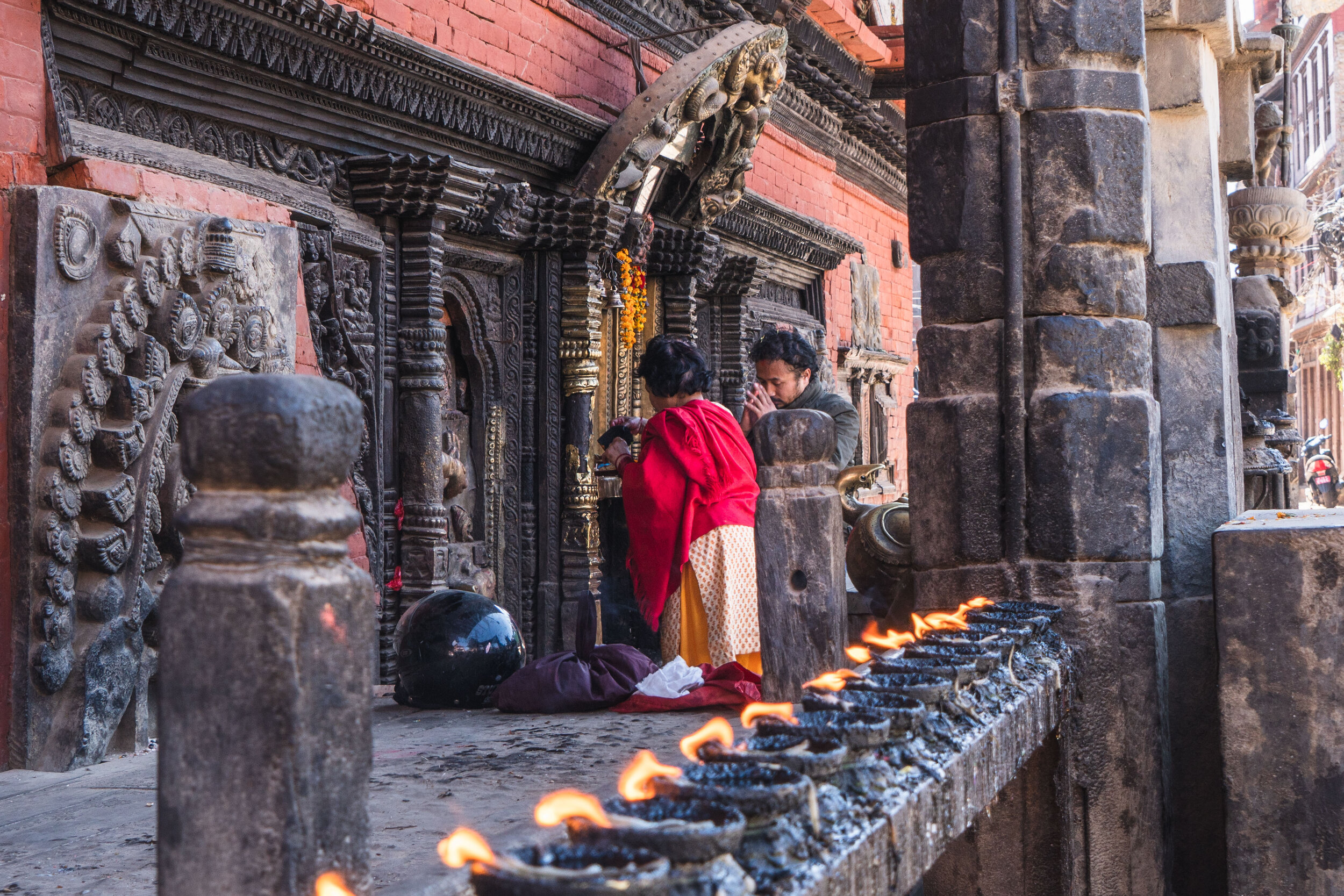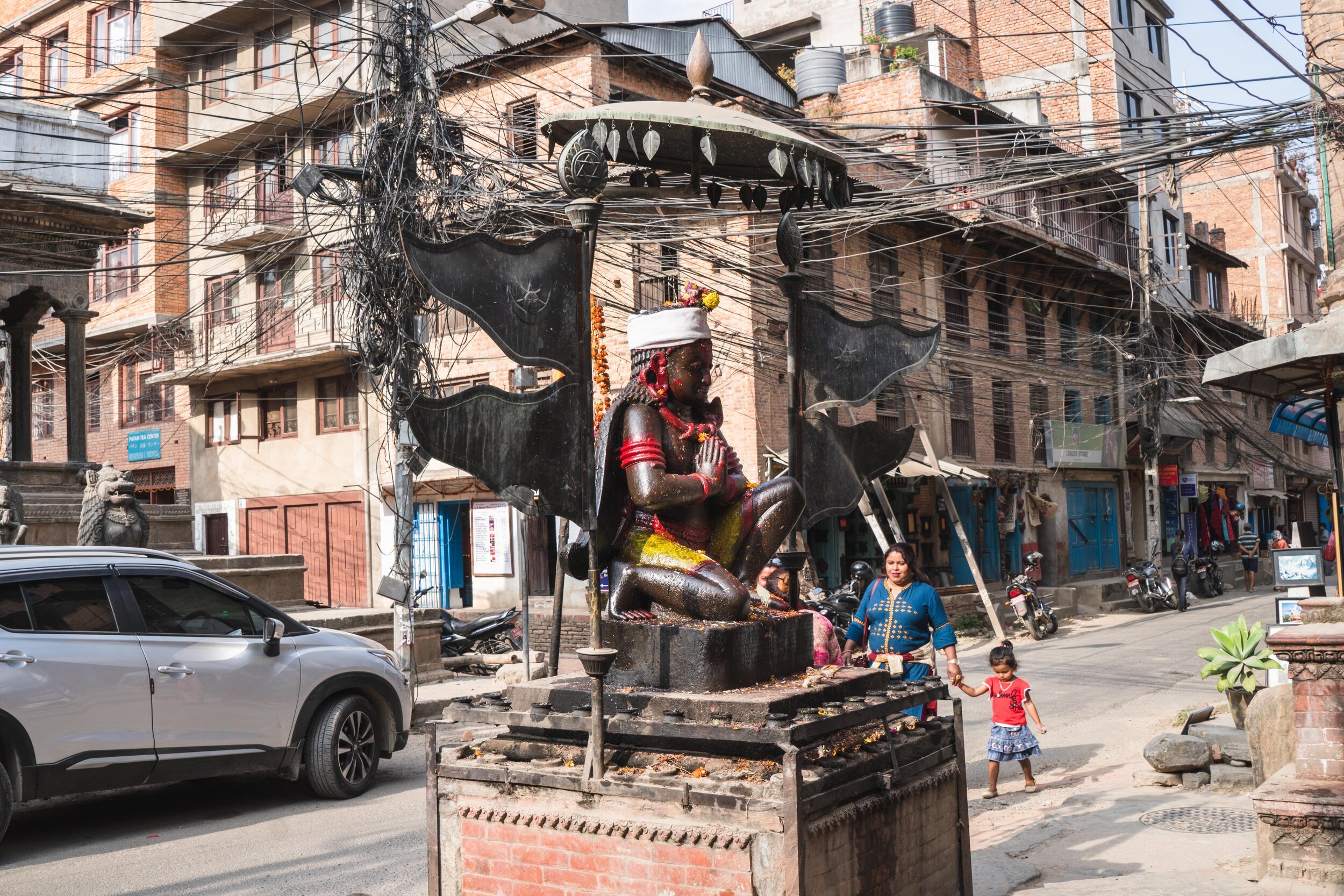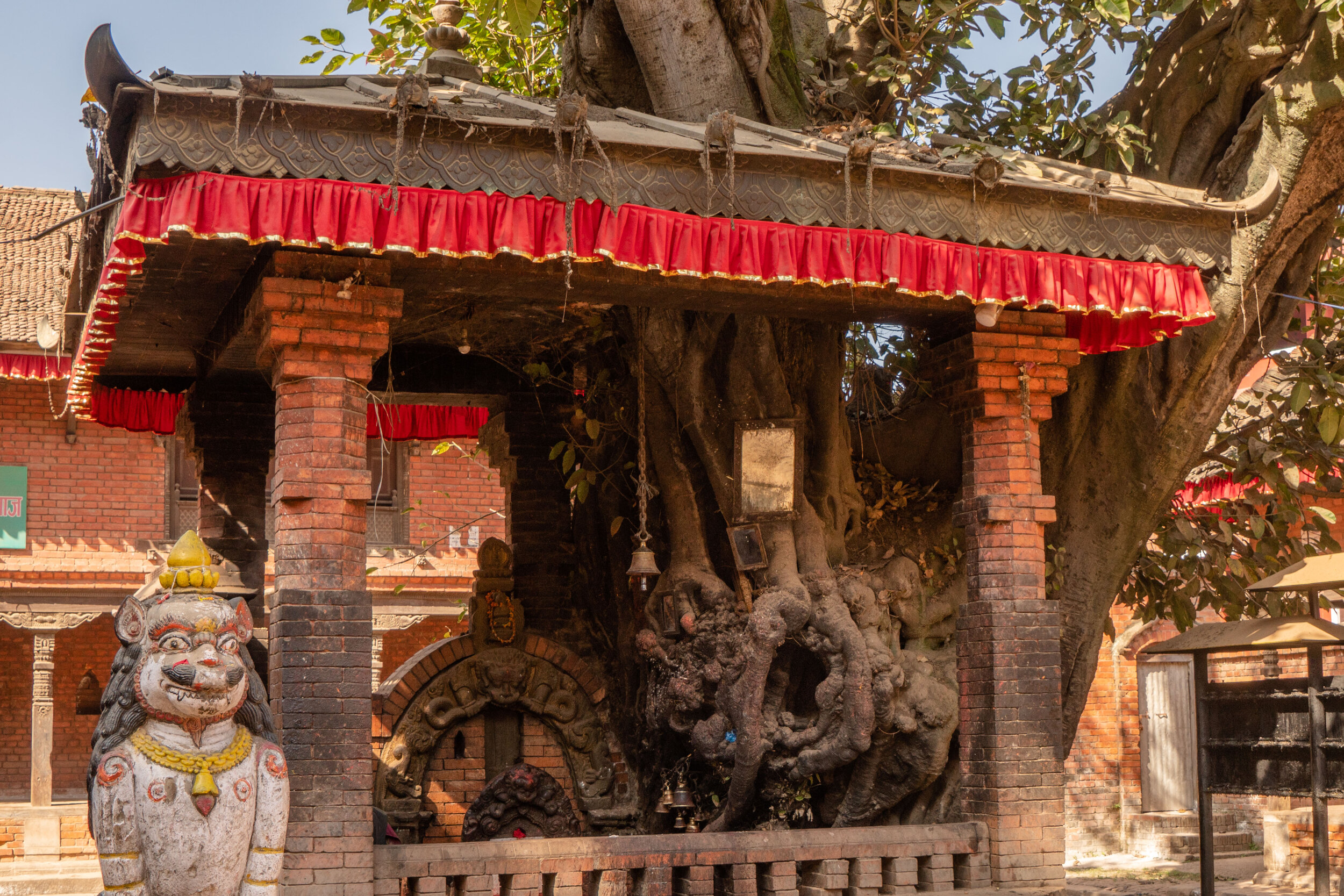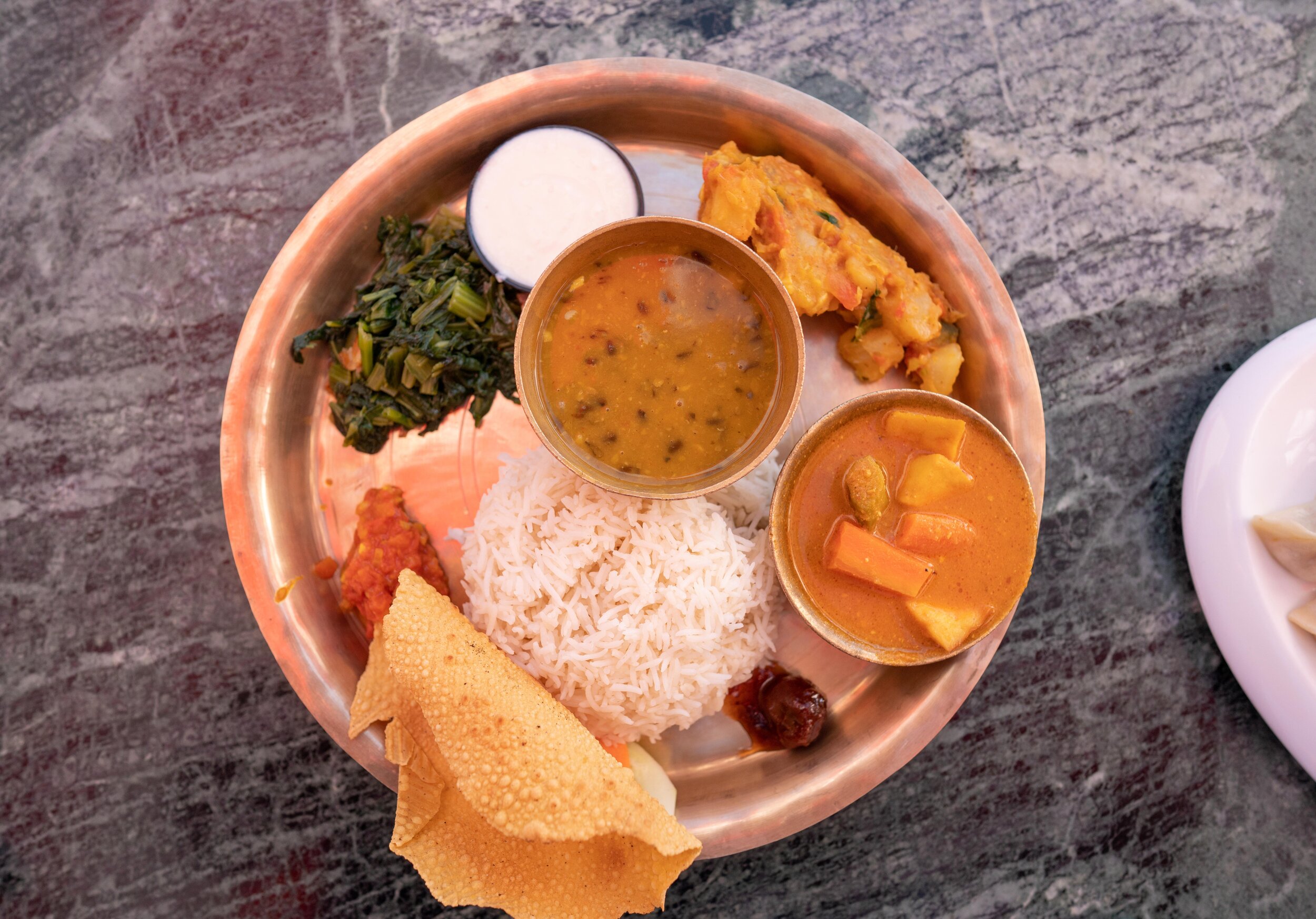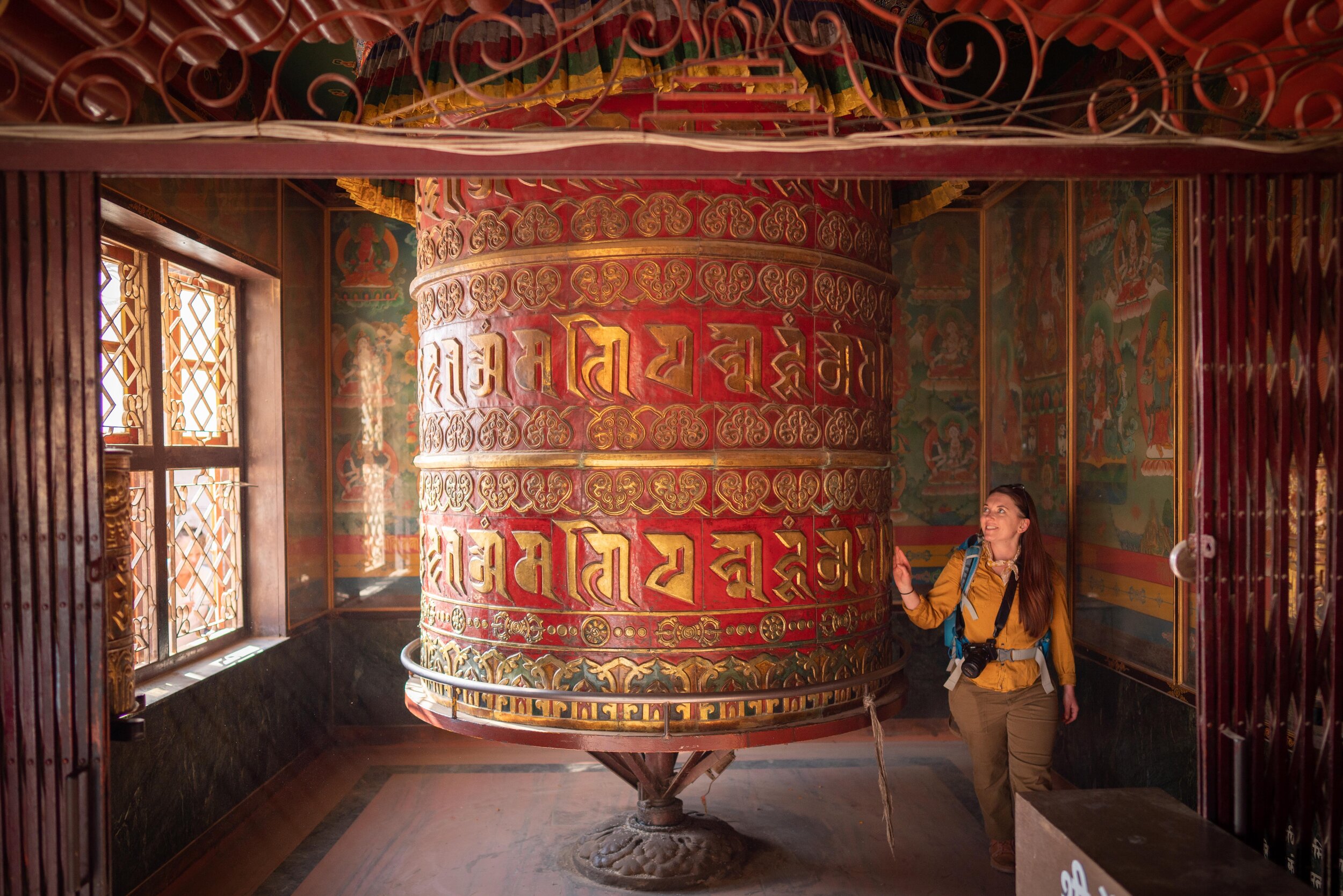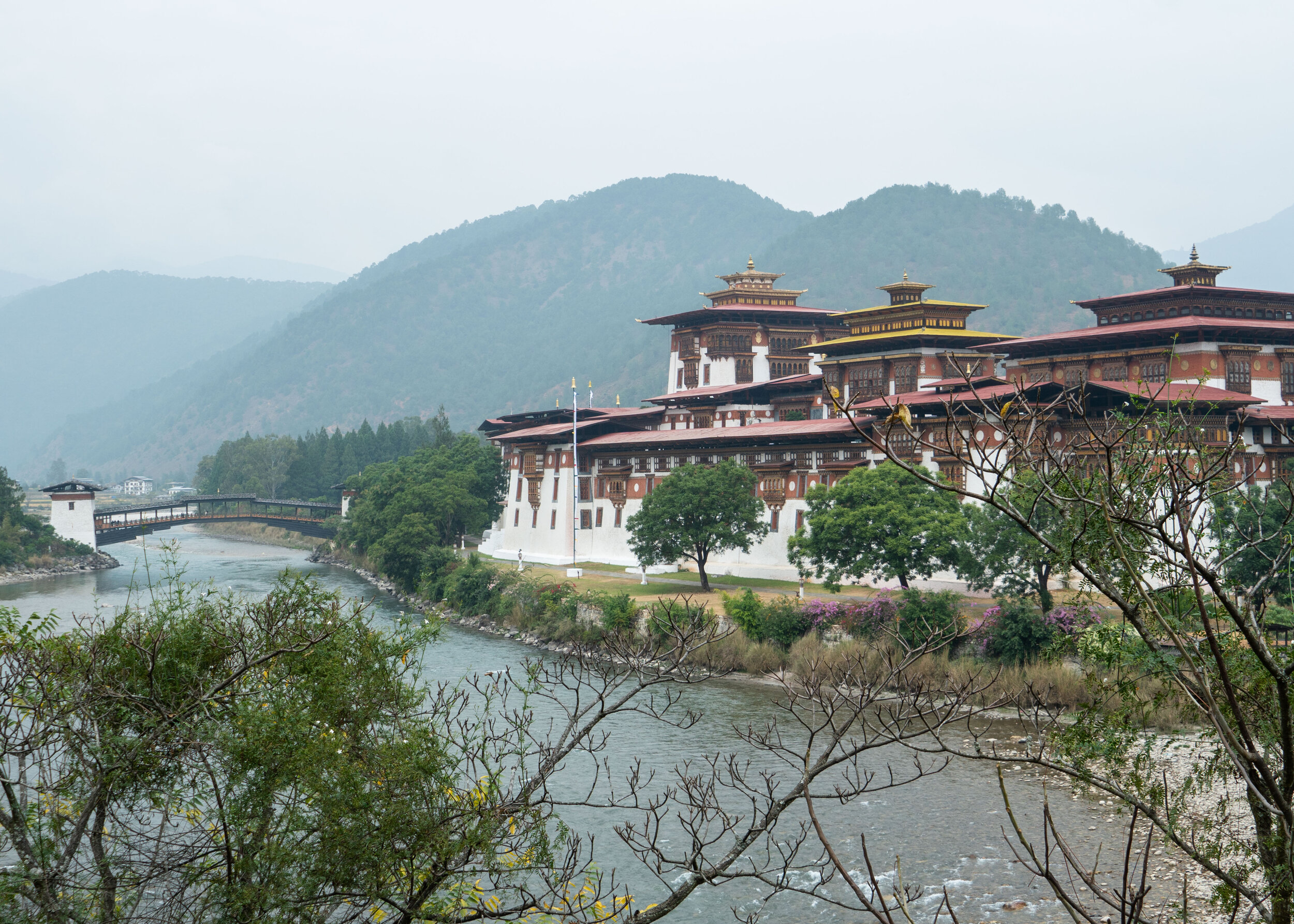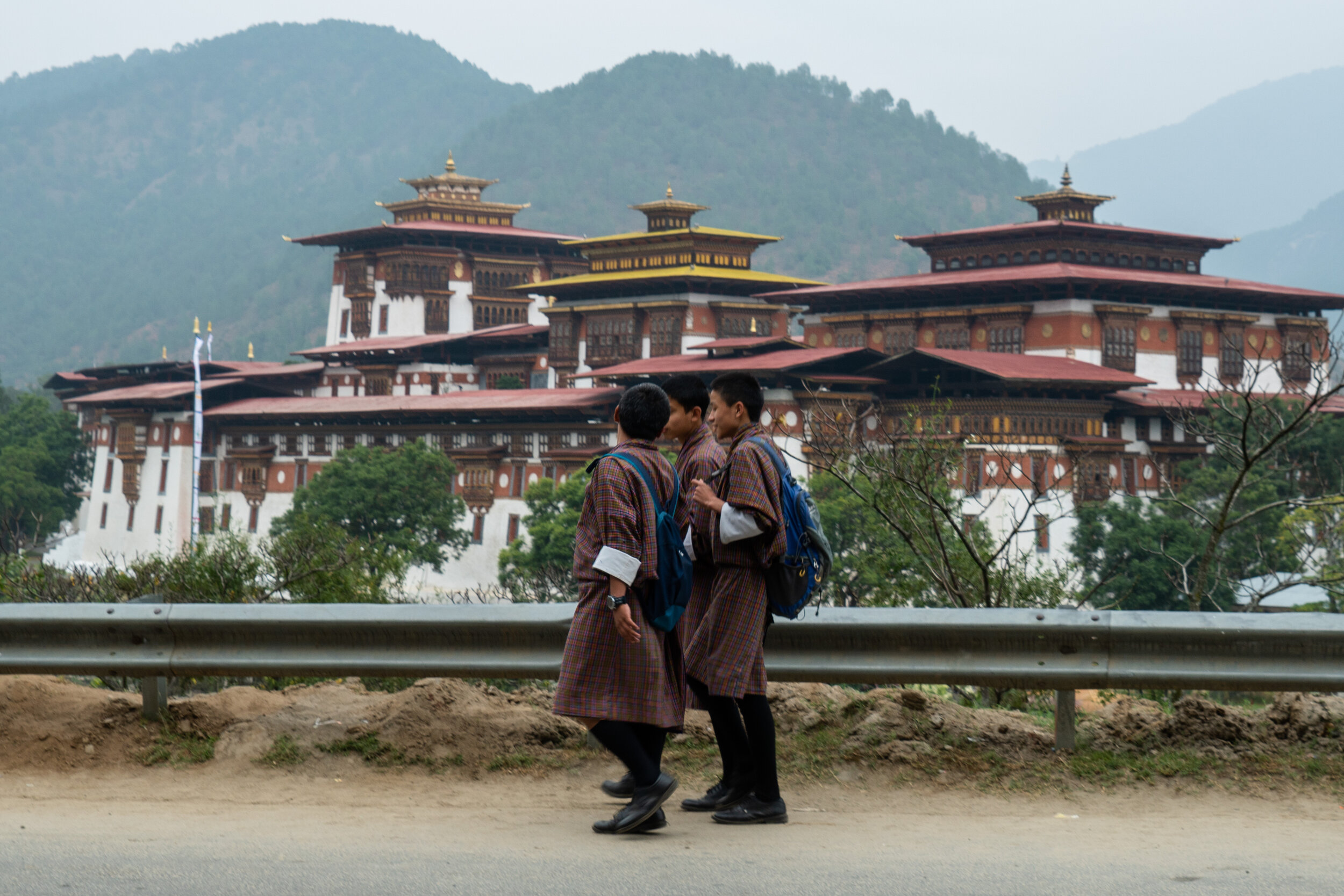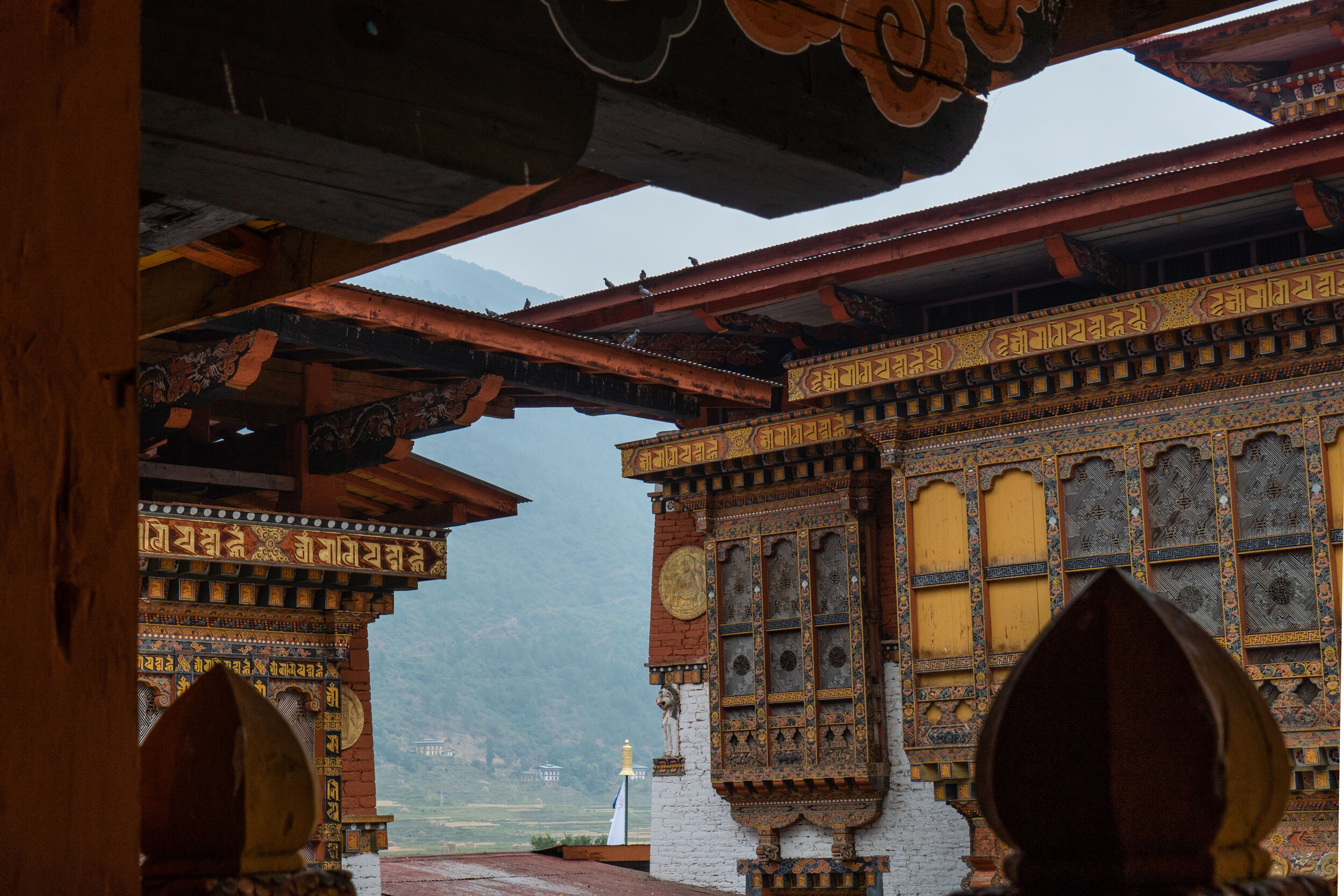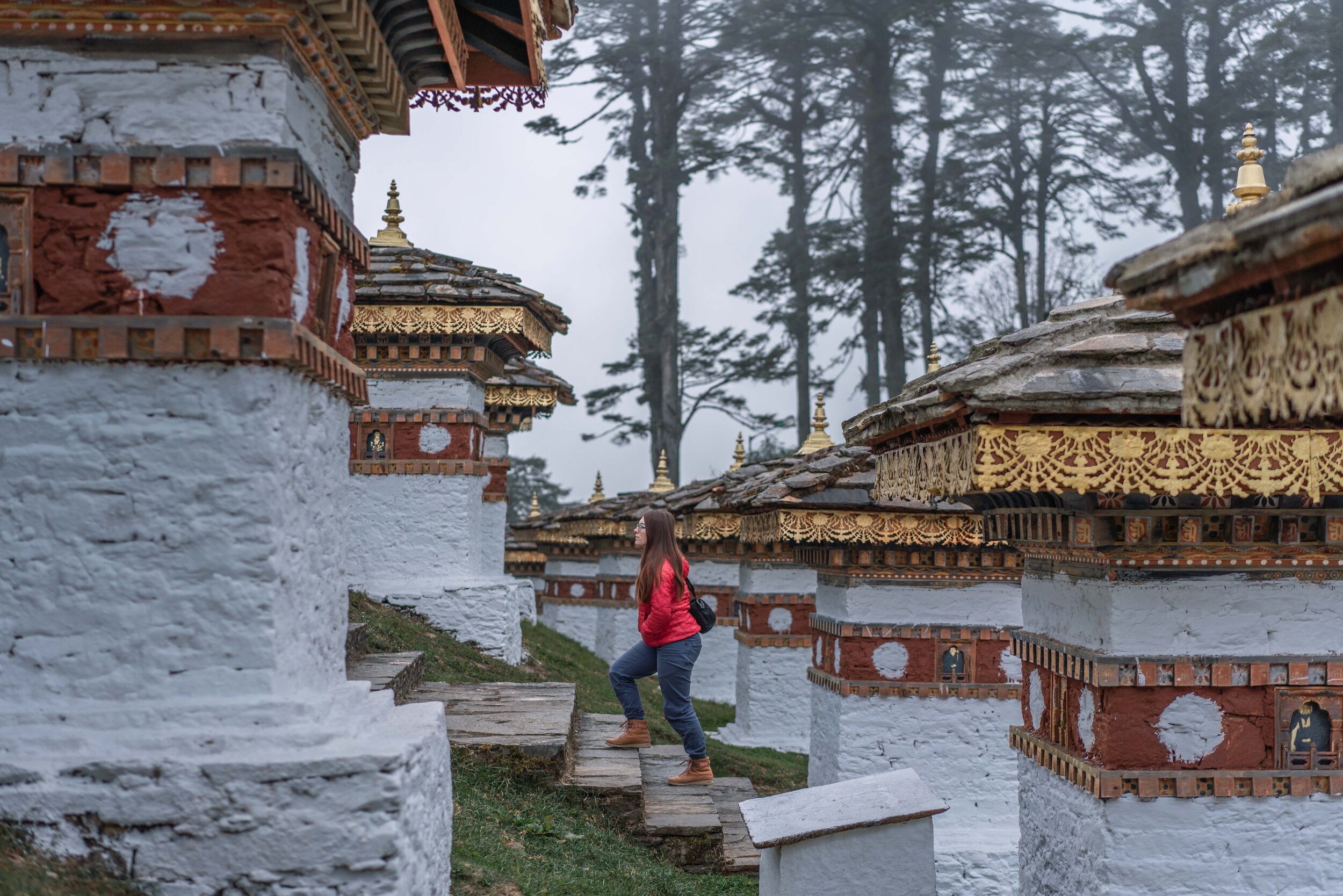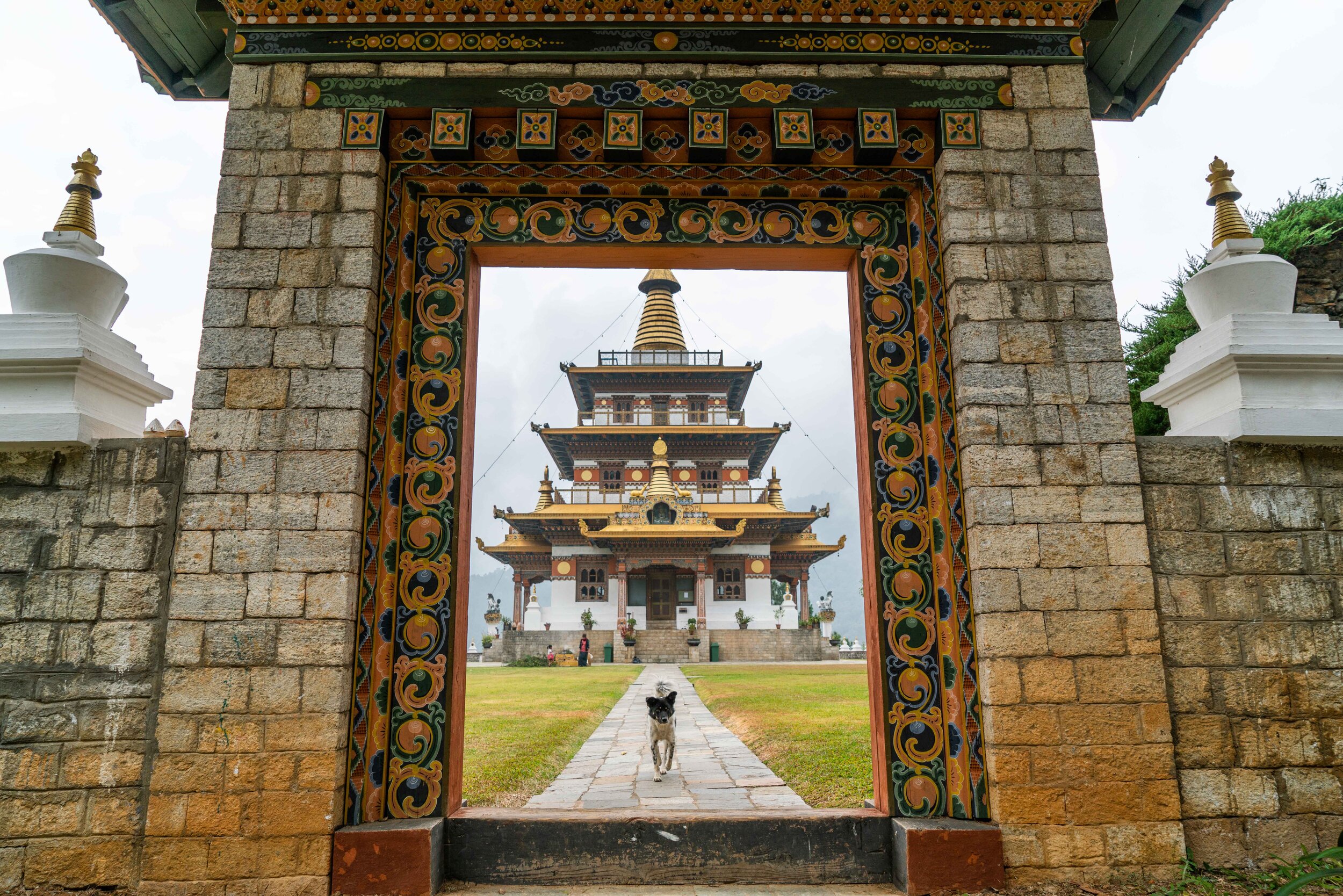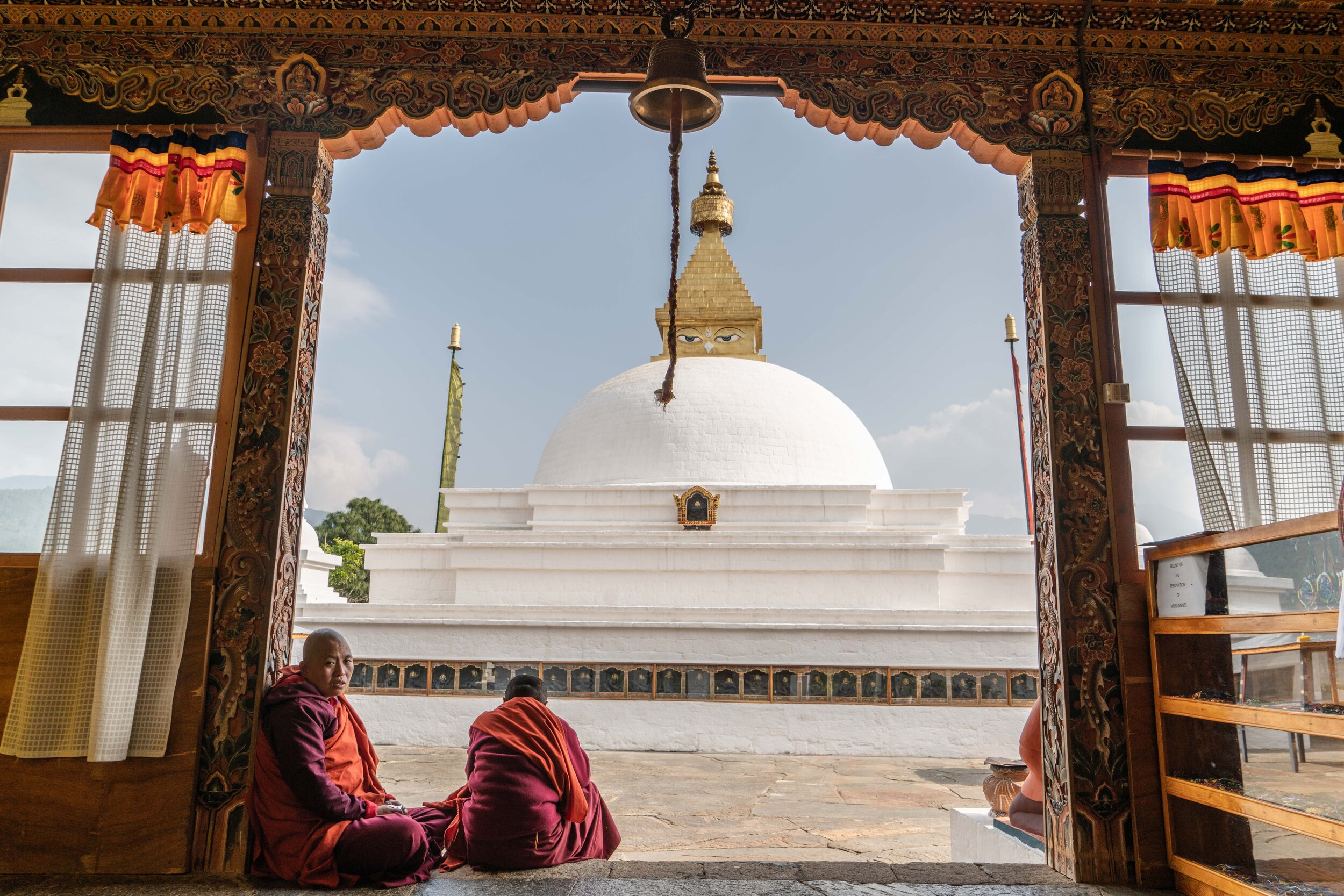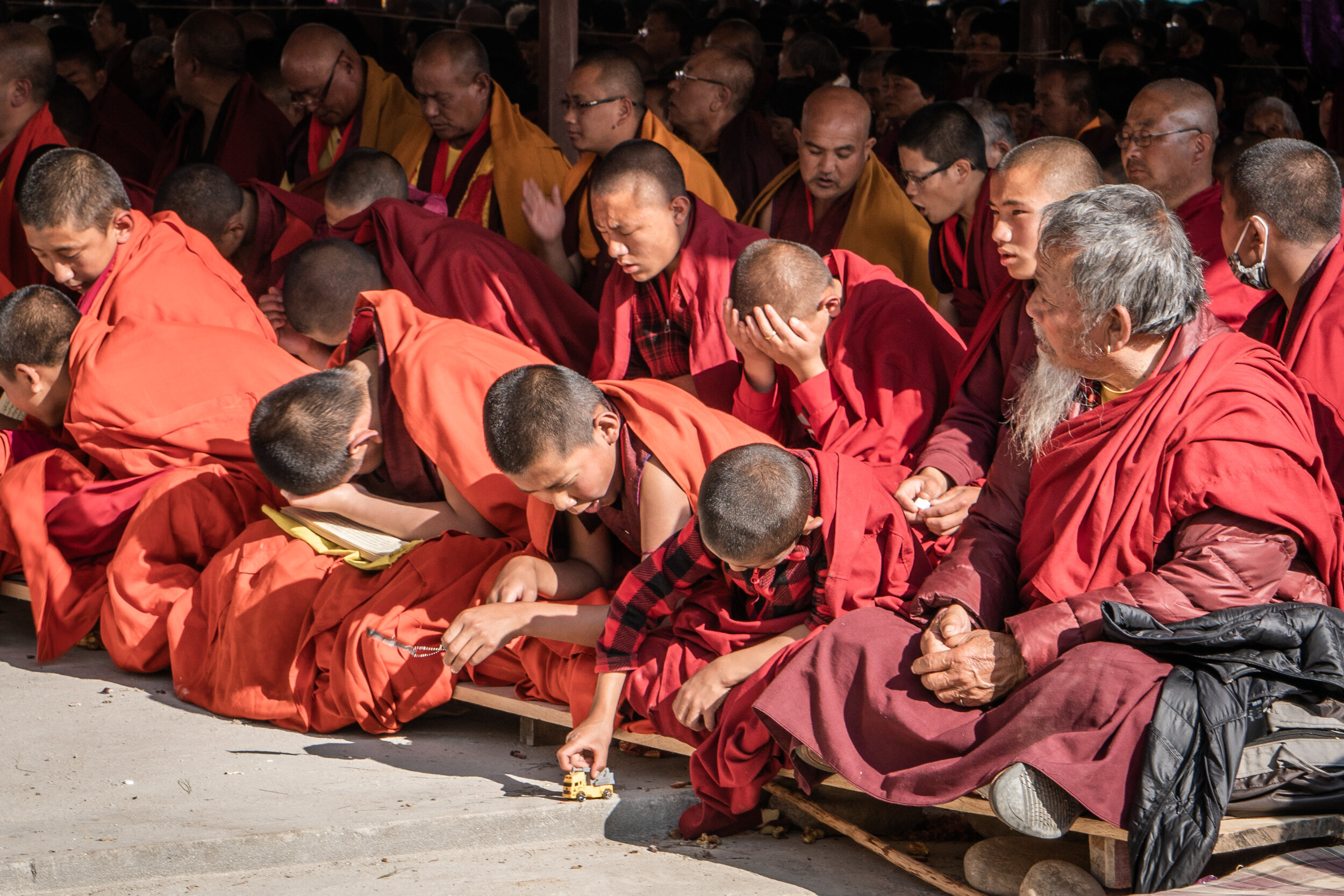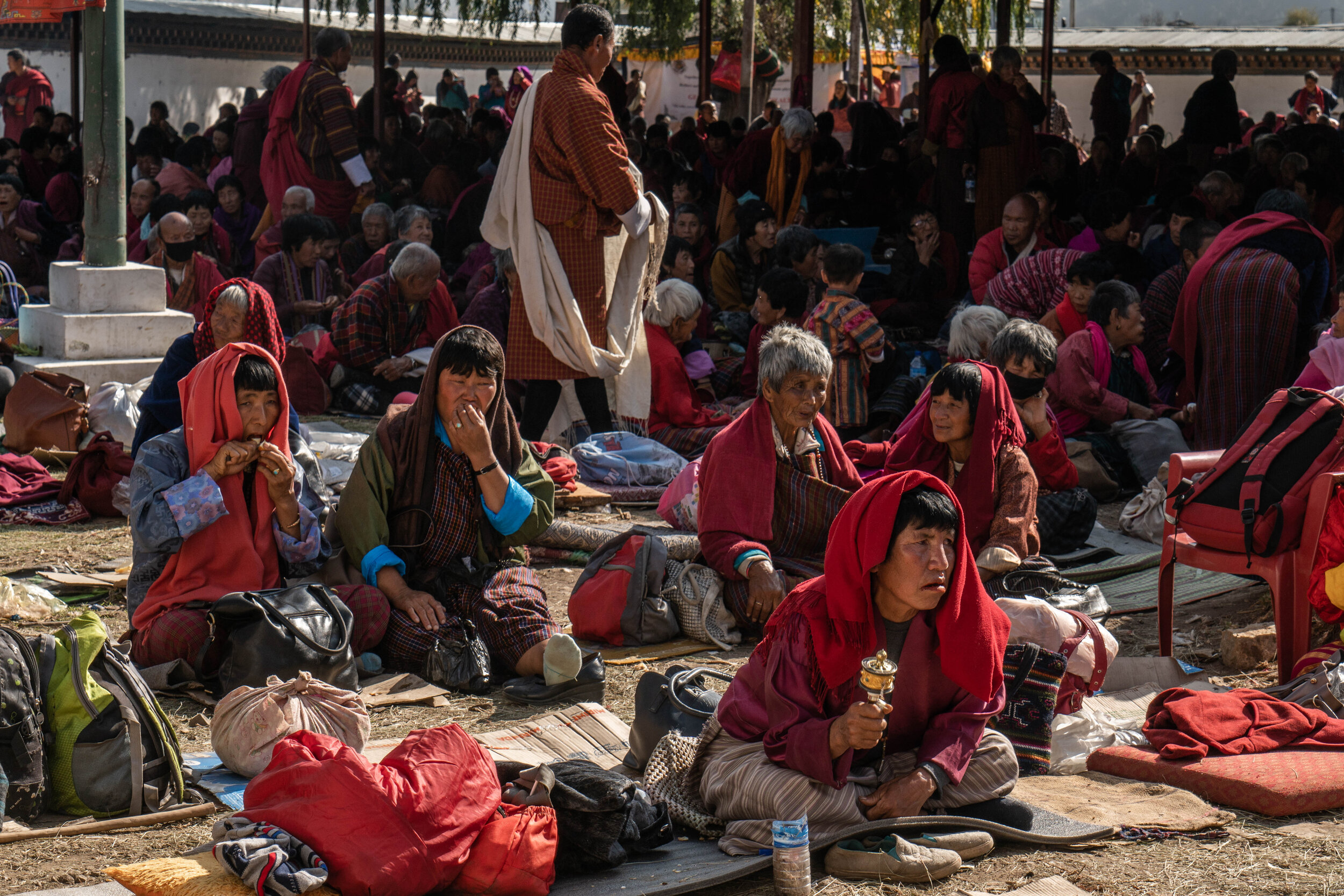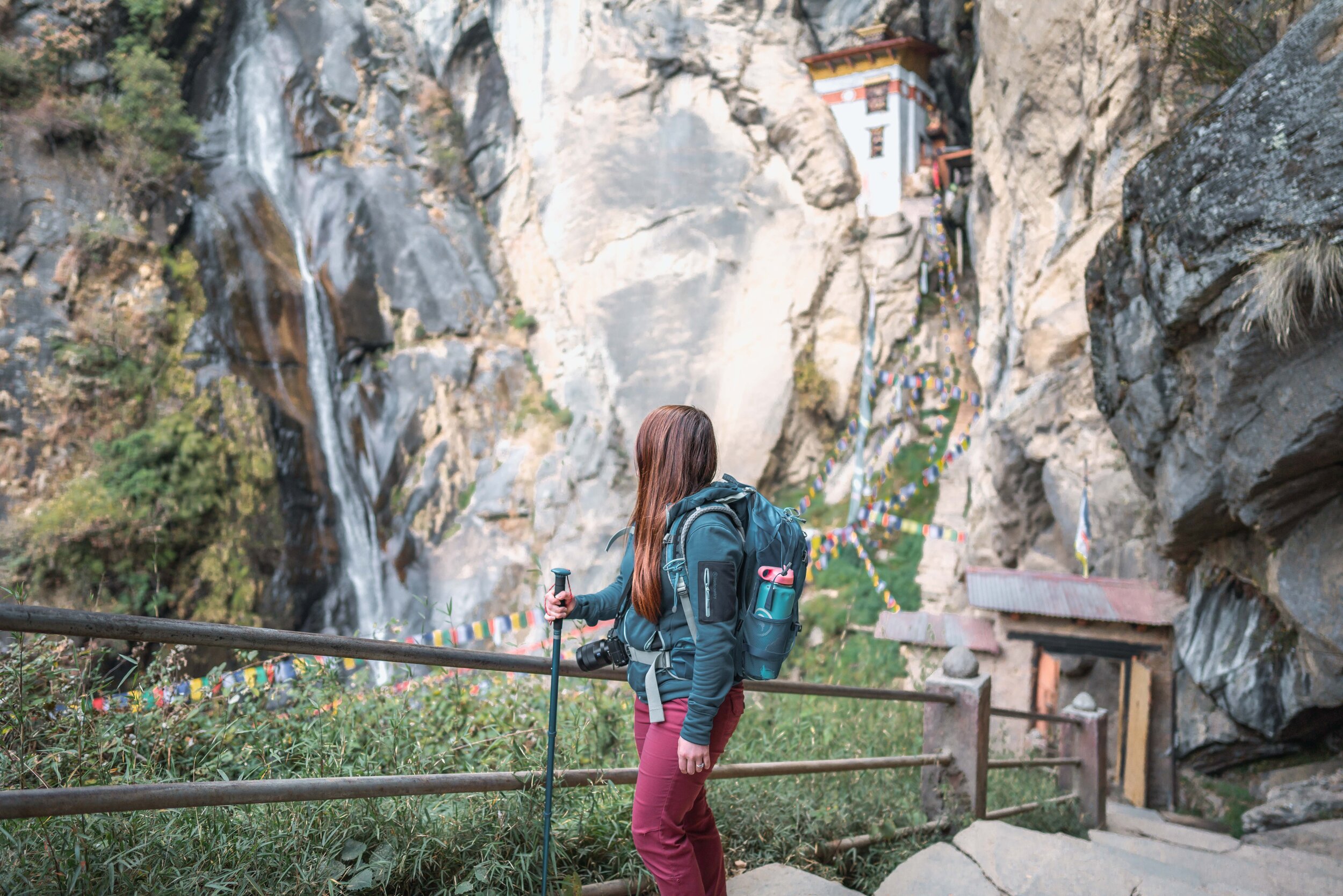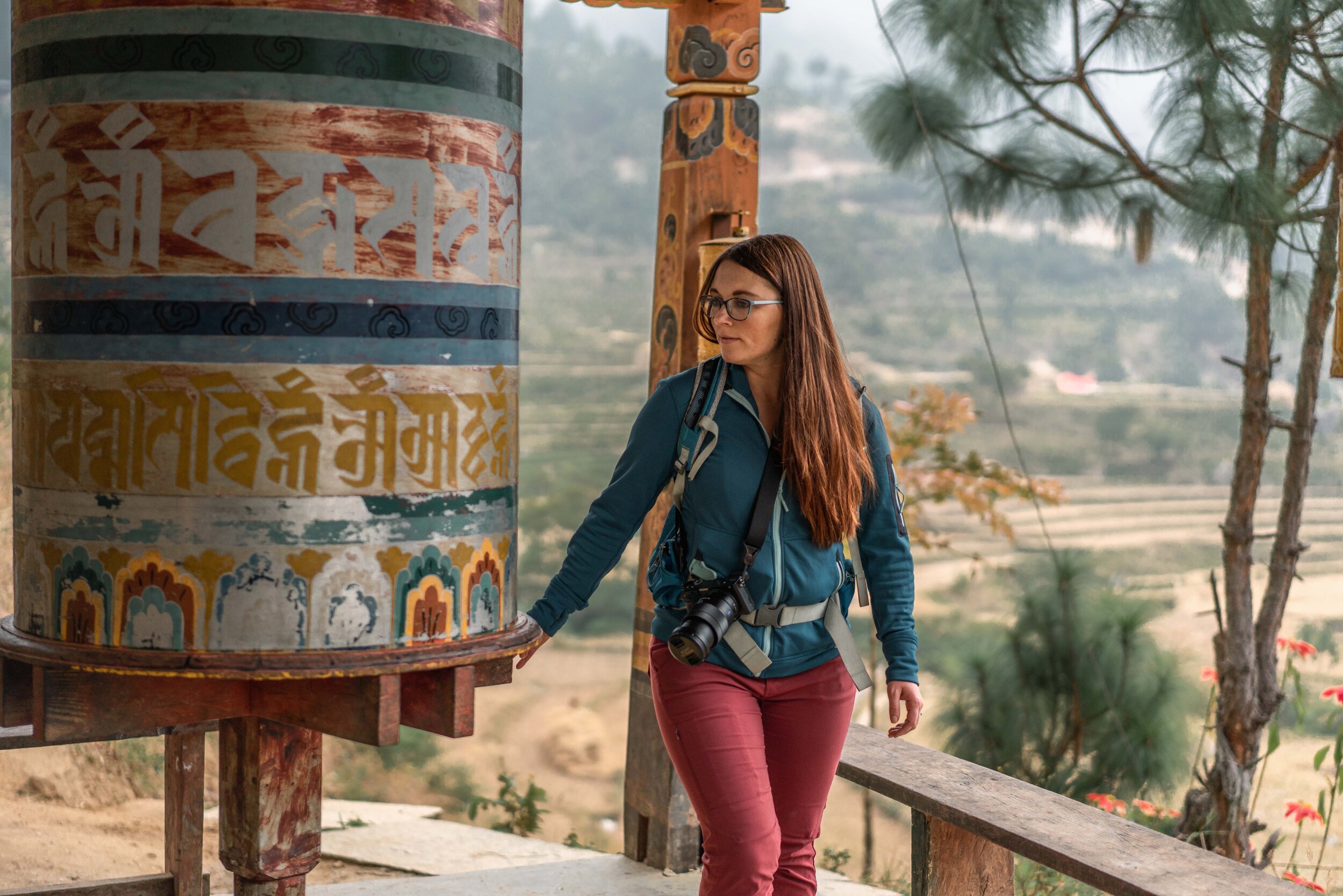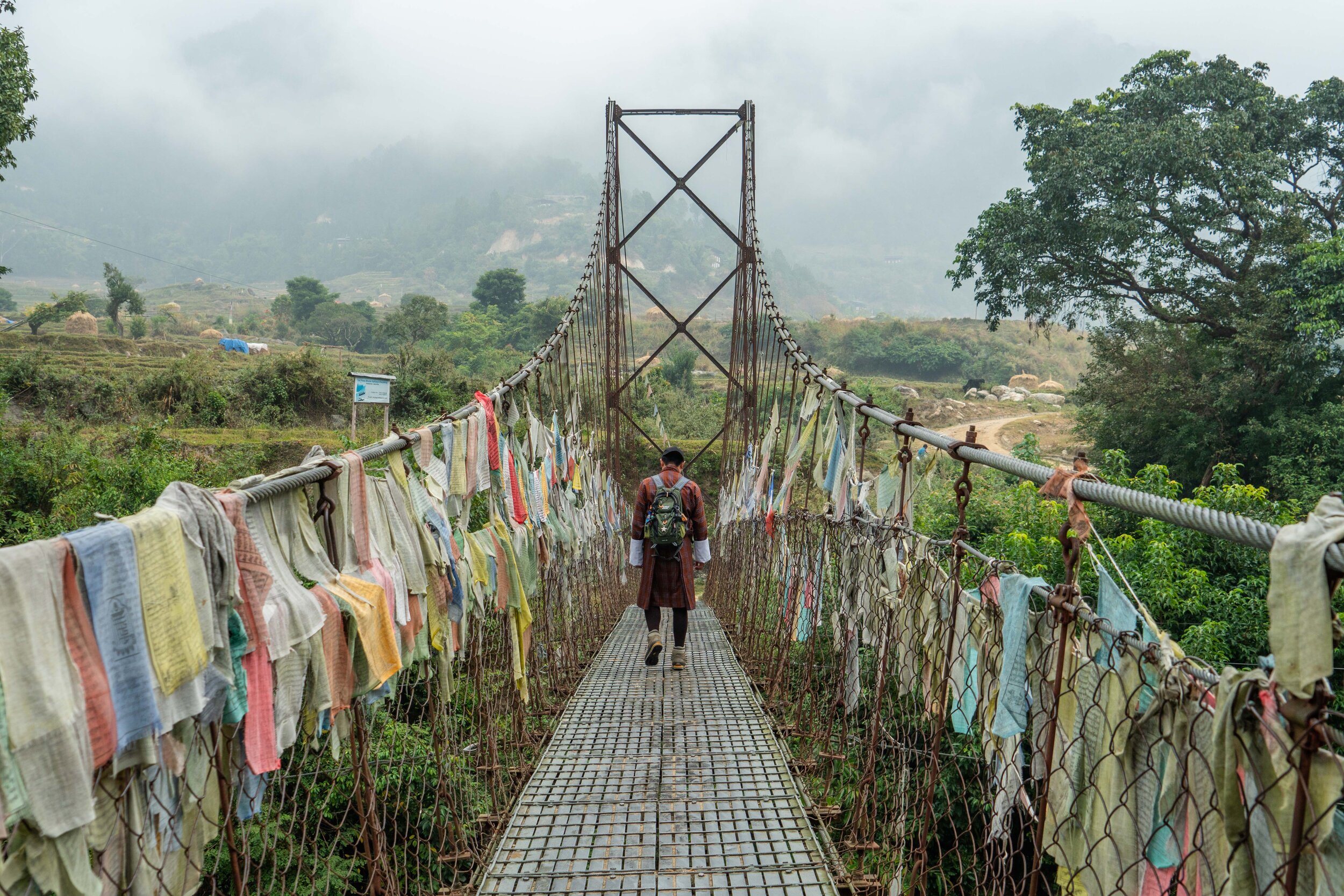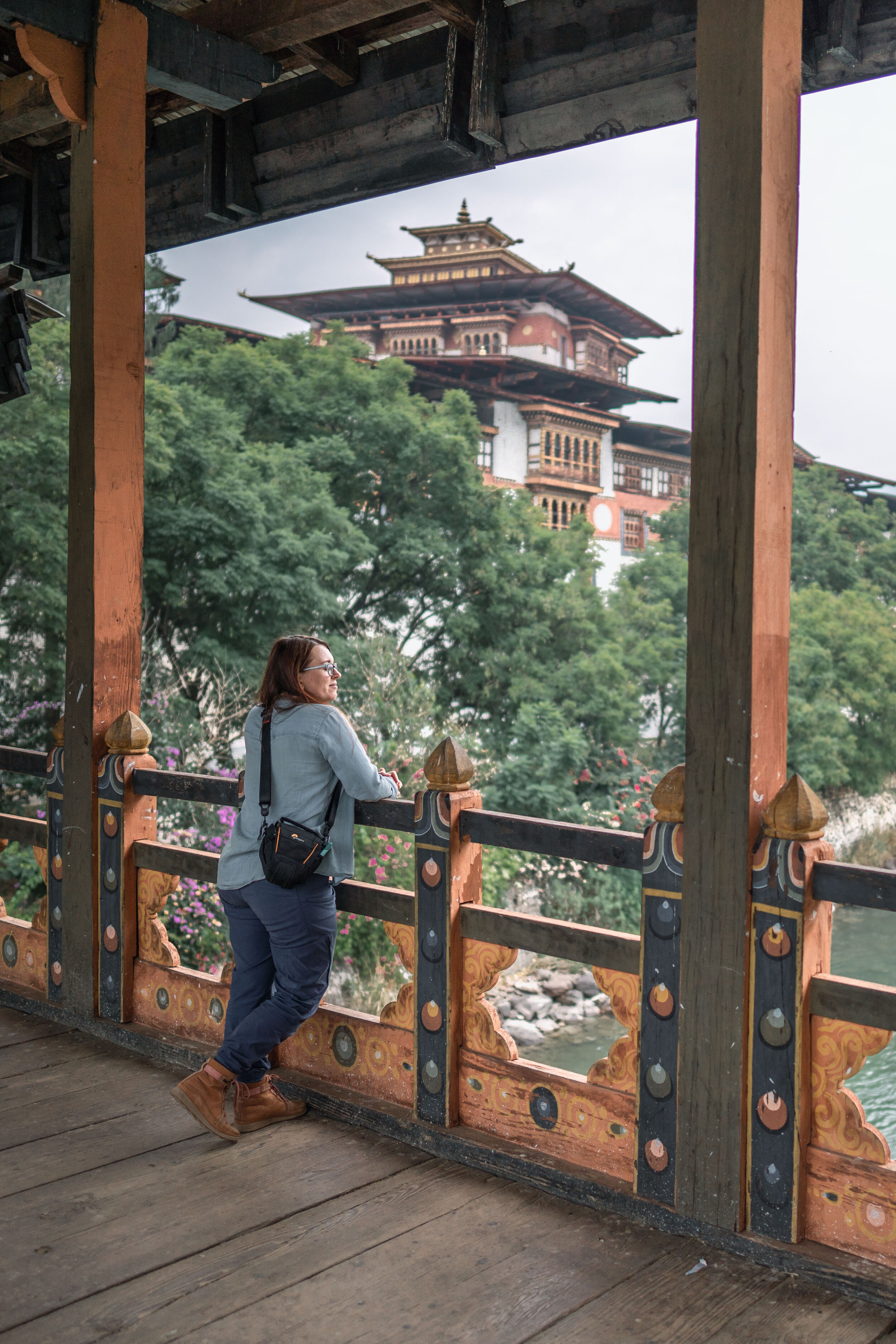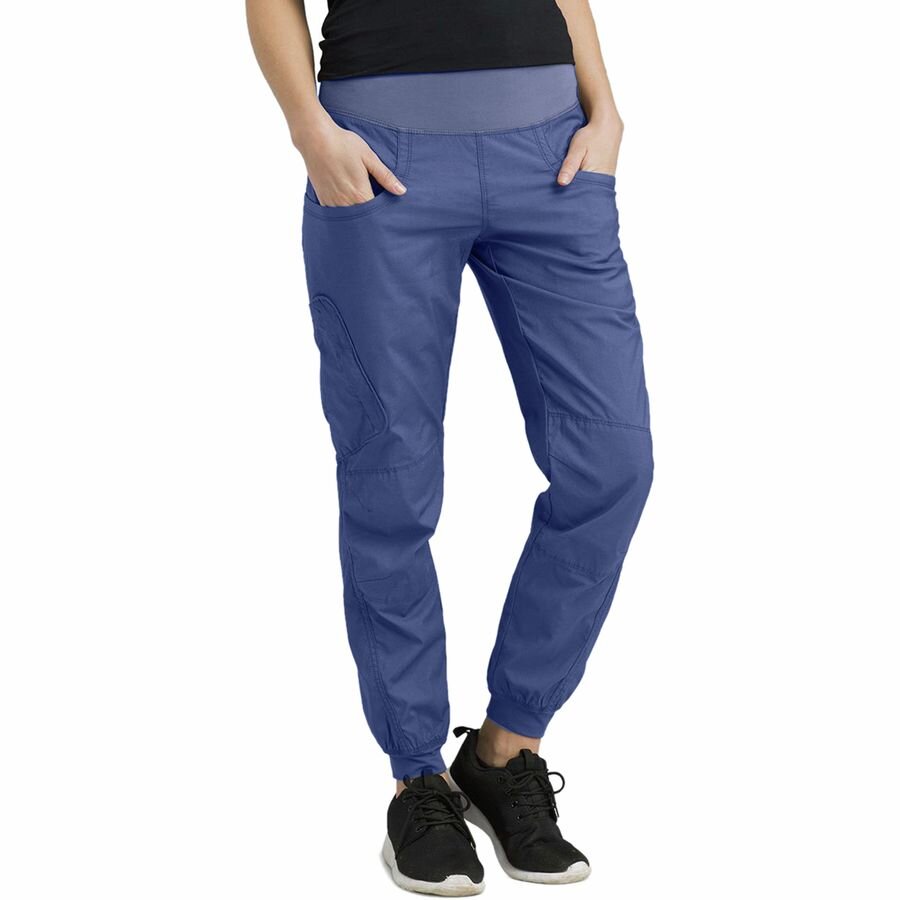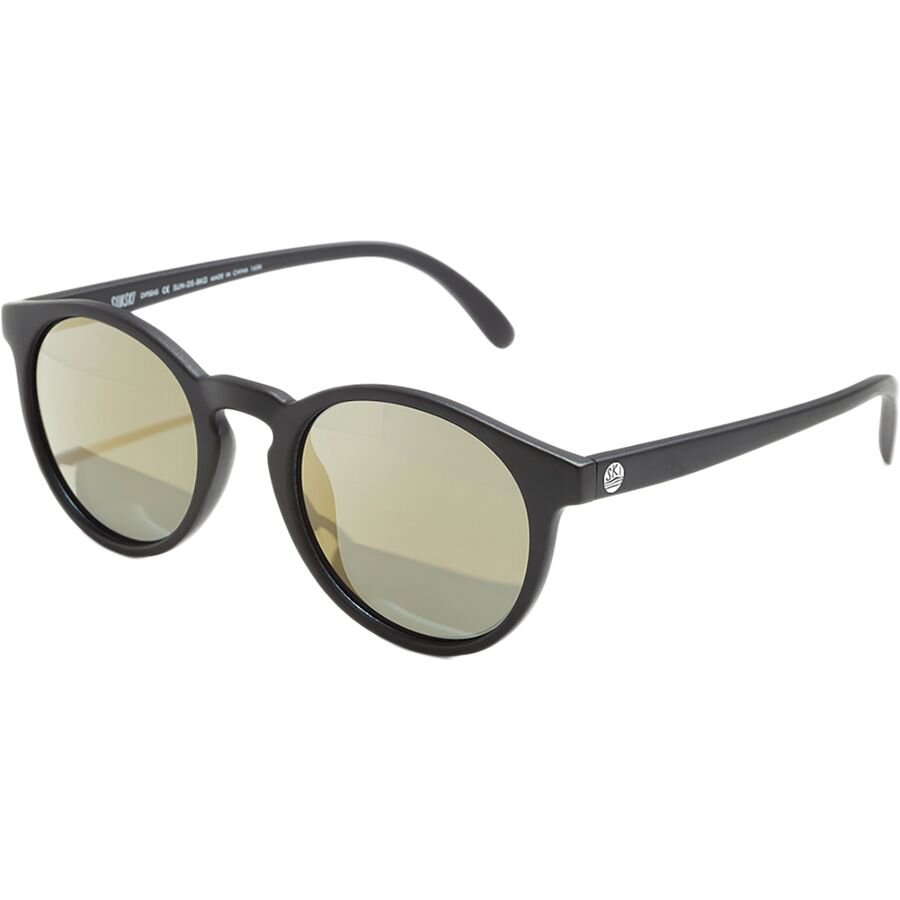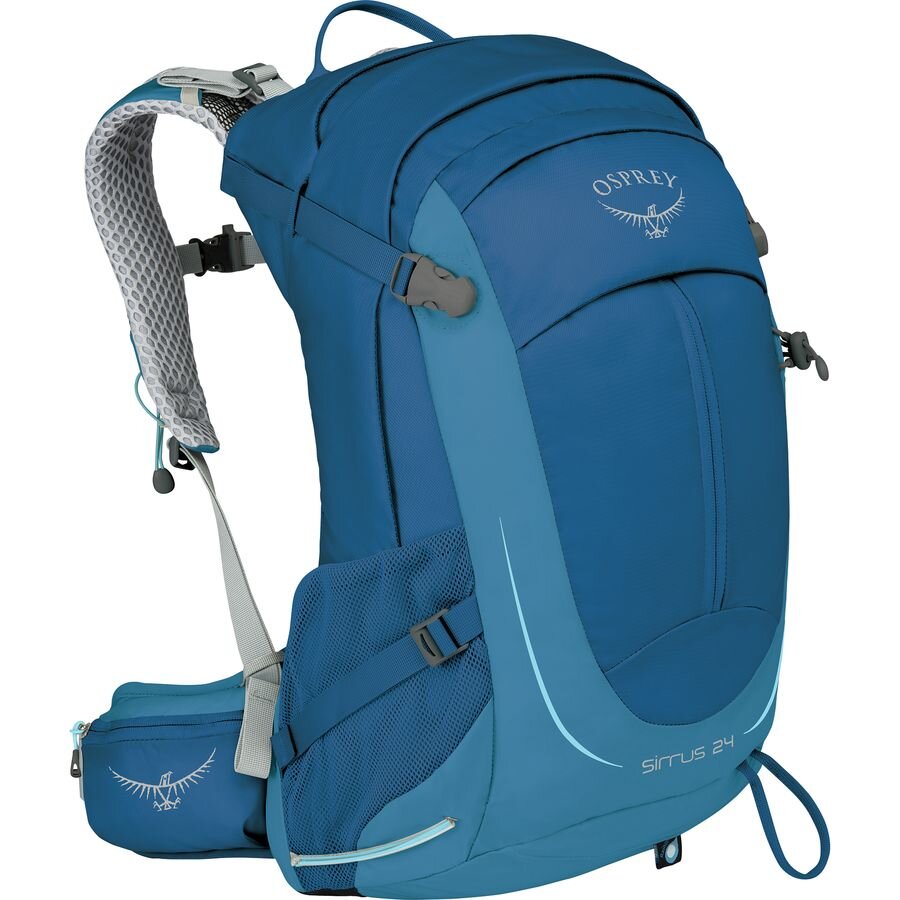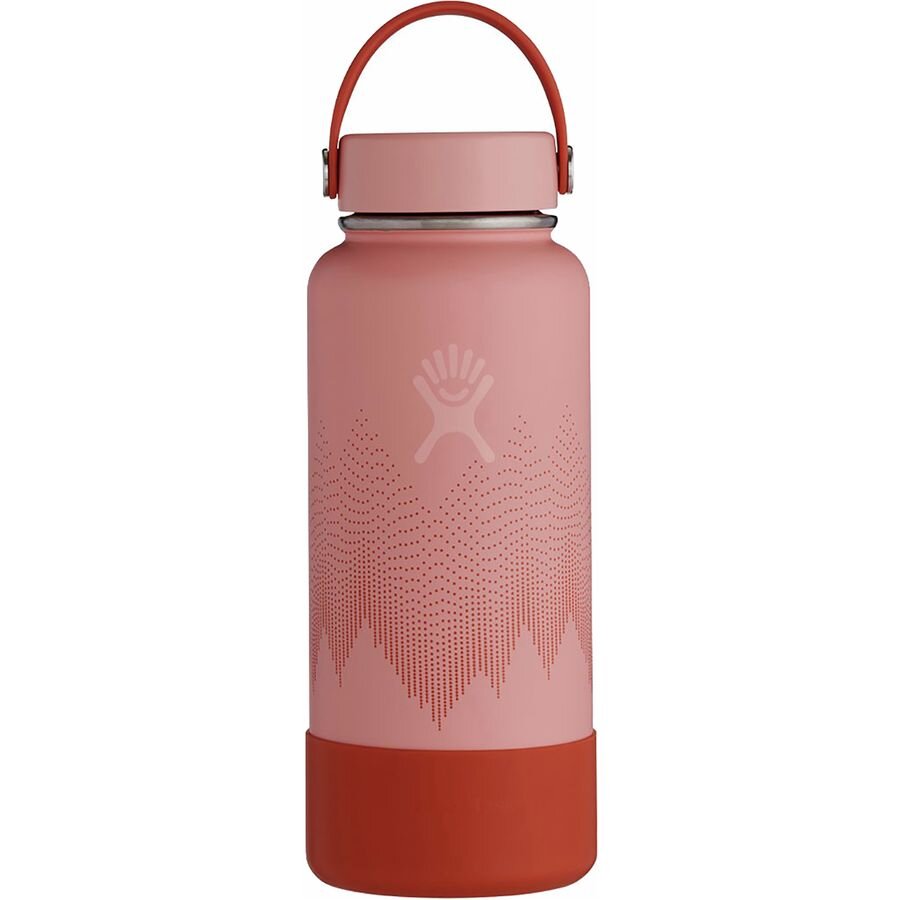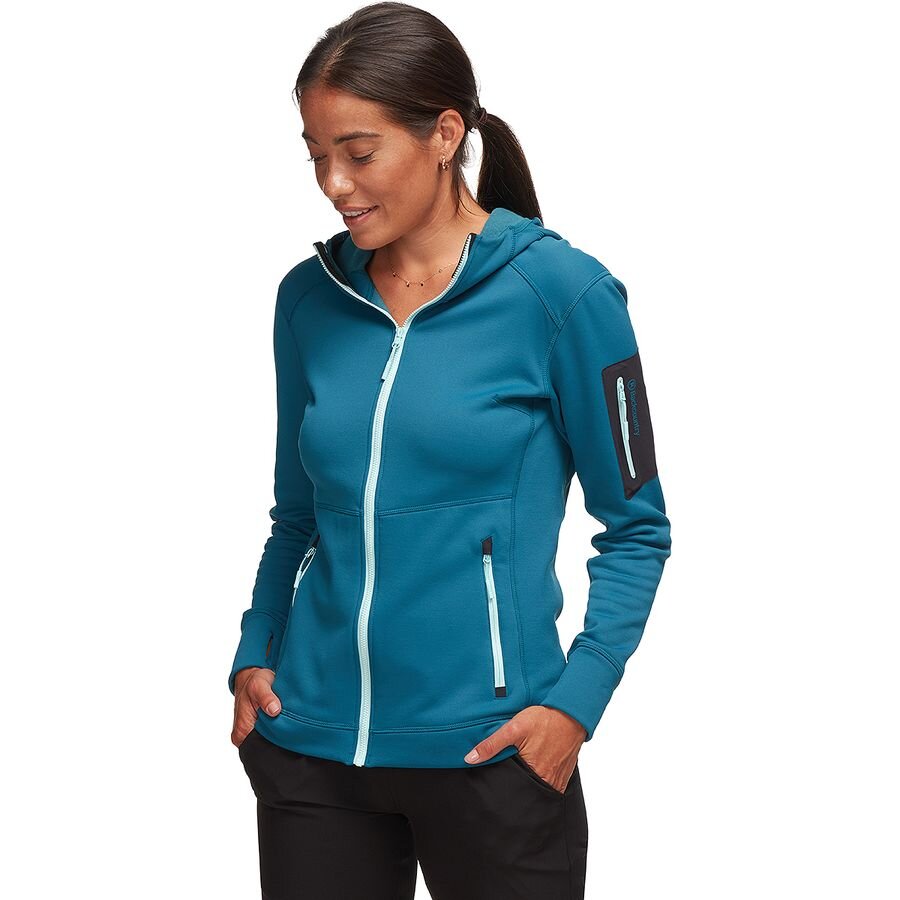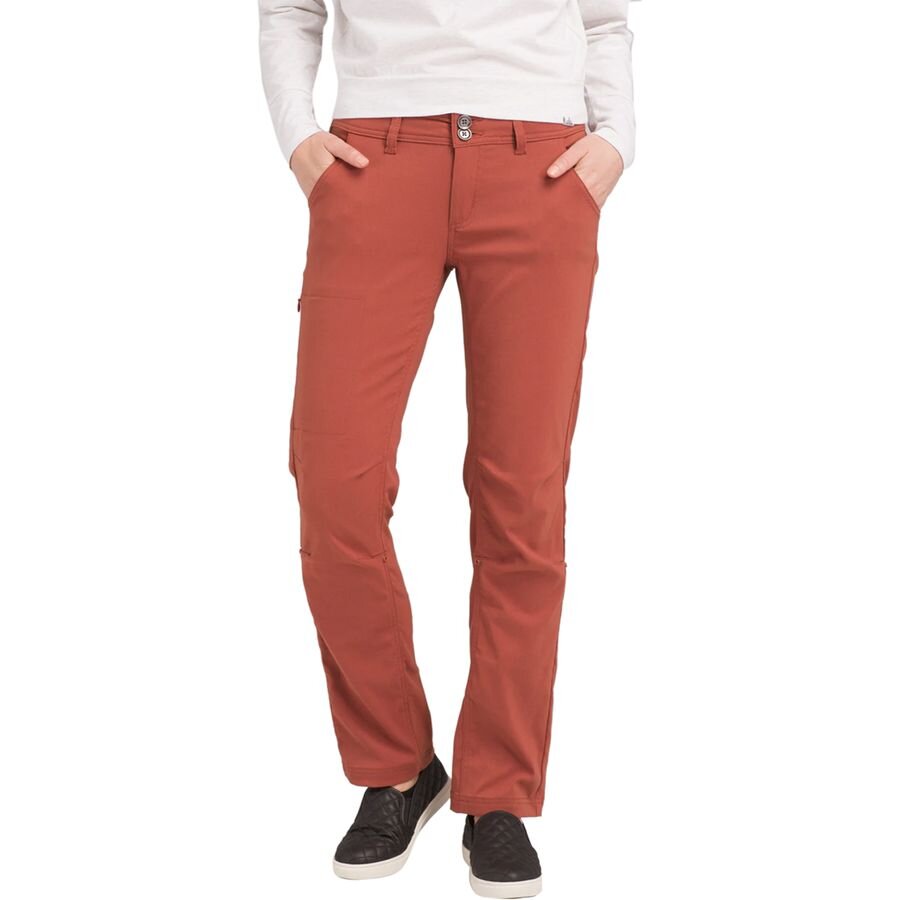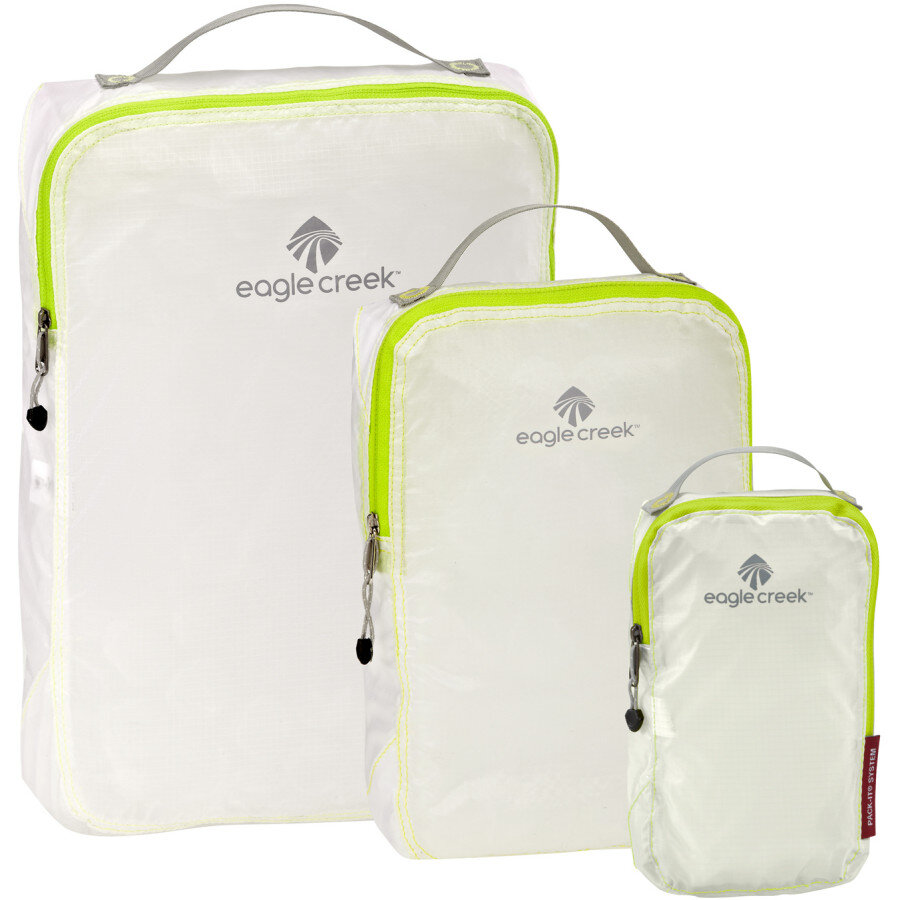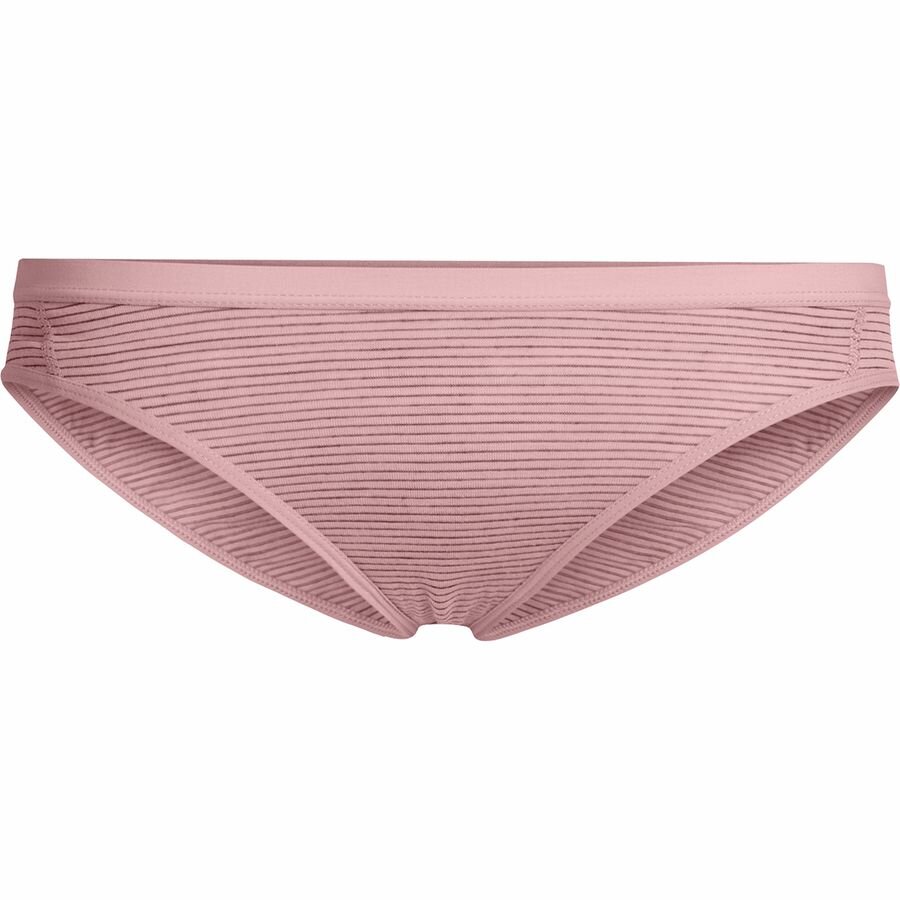Cultural Immersion in Nepal and Bhutan.
This blog was written in collaboration with Backcountry.com.
There is a vast world beyond a tiny fragment that each of us inhabits, and going into it is the only way to understand and open our minds to different cultures, religions, traditions and flavors that might seem very strange at first.
I recently went on a trip that was different from all of the other trips I’ve done. Normally my travel centers around the outdoors, hiking/backpacking or some kind of outdoor activities and, of course, beautiful views. That’s because nature and outdoors are the therapy I am constantly seeking.
On the other hand this trip was a purely cultural experience where I could unleash my curiosity, and learn about a different world and different life. It was my first time visiting these countries and Asia in general. During the trip I realized how little I actually knew about Nepal and Bhutan, their history, culture, religion, food, traditions, politics etc. I wanted to learn as much as possible during the two weeks I spent there, and I asked a myriad of questions to our guides. To be honest, I am still processing all the knowledge and emotions from my trip. Many things like traditions and religion were very interesting yet still so strange to me. Nonetheless, I felt connected with wonderful people in these countries, and found that even with all our differences in lifestyles and beliefs we still have so much more in common. The world is a beautiful and such a diverse place, and this kind of travel can be a deeply transformative experience, at least it was for me. For those of you that love to immerse themselves in cultural experiences or would like to learn more about Nepal and Bhutan, I am going to share what I learned about these two beautiful countries, and also share some traveling recommendations and my essentials .
Nepal
Nepal is 56,827 square miles with a population of over 29 million. Kathmandu is the capital of Nepal and it is also one of the most densely populated cities in the world with 52,550 residents per square mile. I’ve never been to a city this busy before. People move to Kathmandu in search of job opportunities and a better life. Unfortunately, increased population, increased traffic, lack of proper infrastructure, ongoing construction and the position of Kathmandu itself (the valley is surrounded by tall mountains) all contribute to the terrible pollution situation that locals have to live with.
Nepal has eight of the highest mountains in the world with Everest being the highest. There is only one mountain in Nepal, Machapuchare, that remains sacred and still unclimbed by anyone.
National flag of Nepal is the only flag that is not a rectangular shape. It’s actually two joint triangles.
Even if Nepal is a relatively small country it has 10 UNESCO World Heritage Sites, seven of which are located in Kathmandu within a radius of about 20 kilometers. So you could possibly visit all of them in just one day. We had an opportunity to visit most of those in Kathmandu.
In April 2015 Nepal suffered from a massive earthquake that killed about 9,000 people and injured nearly 22,000 people. Walking the streets of Kathmandu I couldn't even imagine how terrifying and horrible it must have been for people. Some of the historic buildings and temples were destroyed but they were now rebuilt to its original form and they still look very impressive. Some of the other temples had only minor damage after an earthquake and thus are considered even more sacred by the locals now.
Nepal also worships a living goddess who is called Kumari. Kumaris are young prepubescent girls, and the word Kumari means “princess”. There are several of them in Nepal but the most important one resides in Kathmandu. Young girls are selected because of their inherent purity and chastity, and once the girls reach puberty they have to be replaced and go back to the world and conduct normal life. But being selected as a Kumari is still a huge honor for the girl and her family for the entire life even after she gets replaced.
Cow is considered a sacred animal in Nepal and it’s illegal to slaughter it. Thus you can see them roam freely even in the busy streets of Kathmandu.
Over 81 percent of Nepalese population are Hindu. Yet Buddhism still has its significant presence in Nepal. In fact, I learned that Buddha himself was born in 623 BC in Lumbini, Nepal which is a holy place now and an important Buddhist pilgrimage site. On this trip I had an opportunity to learn about both Hinduism and Buddhism which were completely new to me.
“Namaste” is the word commonly associated with yoga practice in Western countries, but in Nepal it's just a way to say “hello” or “goodbye”. I can’t think of a more beautiful, graceful and respectful way to greet people. To me, it truly reflects beautiful Nepalese people and their demeanor. Namaste means “I bow to the divine in you” and often two palms are pressed against each other in front of the heart as a greater form of politeness and respect. It might seem like a small thing, but I think this is what I will actually miss the most about Nepal.
Places to Visit in Kathmandu
Durbar Squares
There are three historic Durbar Squares or “noble courts” in Katmandu valley: Bhaktapur Durbar Square, Kathmandu Durbar Square and Patan Durbar Square. All three belonged to a different kingdom in ancient times, and this is where all the royal palaces and temples were built. Unfortunately, many of them were destroyed or severely damaged in the 2015 earthquake and now were rebuilt to their original state. All the squares have an entrance fee of 1000 or 1500 rupees ($9-$13). Actually, we skipped the Kathmandu Durbar Square because we had limited time, and it wasn’t as good as the other two according to our guide. My favorite was Bhaktapur or the “City of Devotees “. The entire town is like a museum itself not just the main square. Another enjoyable thing of Bhaktapur is that its town center is car free which makes it a lot more peaceful and enjoable to explore. Patan or Lalitpur is called the “The City of Fine Arts” and the architecture there has even more intricate design.
Boudhanath Stupa
This was probably the most peaceful site we visited in busy Kathmandu. It is still crowded with tourist and Buddhist monks and pilgrims but somehow there is a somewhat reverent and serene atmosphere around it. Boudhanath or Buddha Stupa is one of the largest in the world. It was built some time in the 14th century, and it is believed that the stupa contains the remains(ashes) of the Buddha. The most important thing to remember about Buddhist stupas is that you are supposed to walk around them clockwise. There are a lot of beautiful colorful prayer flags flapping in the wind all around the Stupa. Each color represents one of the five elements: red symbolizes fire, yellow is earth, green is water, white is air or wind, blue is the sky or space.
Cremation at Pashupatinath Temple
To be honest, seeing open air cremation wasn’t something I expected to experience on this trip. It felt weird because in a way I felt like intruding into someone’s very personal and intimate event. Yet open air cremation is such an important part of life and tradition for local people. Cremation site is located by the Pashupatinath Temple which is one of the most important temples for Hindus. Actually cremation at this location dates back centuries, and people of Nepal believe if the cremation at Pashupatinath is carried out, their loved ones will join the eternal path. The process might take 3-4 hours or even longer, depending on how busy this place gets. Family members have to stay until all the ashes go into the river. It might seem logical given the current state of toxic Bagmati river and polluted Kathmandu to discontinue this practice, but it’s not something locals are ready to give up because for them it’s a sacred and important event which is an integral part of their lives.
Swayambhunath Temple
Swayambhunath Temple or most commonly known as the Monkey Temple by the tourists is located on a hilltop and has a great view of Kathmandu valley. Obviously, it was called a monkey temple because there is a large number of monkeys that live there. At one point you might see only a few of them, and few minutes later they might be everywhere around you. Not gonna lie that all these monkeys made me really nervous, but they are very much accustomed being near humans and are not afraid at all being close by. In fact, you better watch your belonging and not eat food in front of them. The temple itself is a very unique place and monkeys sure add to the experience and making it all very memorable.
Bhutan
The Kingdom of Bhutan is 14, 824 square miles, which is approximately 256 times smaller than the United States. It’s population is about 800,000 people. Bhutan is located at the southern slopes of eastern Himalayas, and it’s nestled between two giants China and India.
Locals actually don’t call their country Bhutan but Druk Yul (Land of the Thunder Dragon).
There is a mandatory national dress code in Bhutan, where male are supposed to wear a Gho, knee-lengths robe tied at the waist, and women are supposed to wear an ankle-length garment called Kira accompanied by a jacket known as Tego. Of course, nowadays people are not wearing these national outfits all the time but they are only supposed to wear it to government offices, monasteries, schools and important functions and events. For a visitor like me, national outfits are what makes Bhutan more special. But talking to some locals I understood that many would prefer regular clothes if given a choice. This mandatory dress code was established to preserve the culture and identity of Bhutan, but , as always, there are two sides of the coin.
Until 1960s there were no paved roads, cars, phone or postal service and no electricity in Bhutan. Only in 1999 television and internet were legalized and introduced in Bhutan as a part of modernization plan. Now almost everybody in Bhutan has a cellphone, and are very much up to date with what’s going on in the world. By many visitors Bhutan is considered a Shangri-La which is a fictional place described by James Hilton in his novel “Lost Horizon”(1933), but it’s already changing and will keep changing even more like many other countries and cultures do.
The government of Bhutan has been a constitutional monarchy only since July 2008. At the time people were uneasy with such change but fast forward to today they seem to be pleased with it. King is still a very important and revered figure in Bhutan. In fact, it is hard to find a place without a picture of the royal family.
Bhutan is the first Country that established Gross National Happiness philosophy that guides it’s government. GNH had four pillars: 1.Sustainable and equitable socio-economic development, 2.Environmental conservation, 3.Preservation and promotion of culture and 4.Good governance. Does having GNH mean that there are only happy people in Bhutan? Of course not. GNH is rather an aspiration and a set of guidelines on the path to a better, sustainable and equitable society.
The constitution of Bhutan mandates that a minimum of 60% of the land in the country has to remain under forest cover at all times. I have to say that Bhutan truly has a beautiful healthy looking forest. Also, one of the most amazing things is that there are a number of endangered species of animals including tigers that found refuge and thrive in Bhutan.
Mountains are considered sacred in Bhutan. In 1994 the government forbade climbing of mountains higher than 6000 meters, and since 2004 mountaineering in the country has been banned completely. But Bhutan still has the Snowman trek which is considered to be the most demanding trek in the world, and it normally takes about 26 days to complete it.
Bhutan is also the only “carbon negative” country because it absorbs more carbon than it emits.
Glacial fed rivers of Bhutan are revered as “white gold” because of hydropower they generate which is the biggest export and source of revenue.
Bhutan is a Buddhist country by constitution, and Buddhism is very much intertwined with Bhutan’s culture and traditions. 75 percent of the population of Bhutan are Buddhist with the remaining 25 percent being mostly Hindu. There is also a small percentage of people that affiliate with Christianity but proselating or building Christian temples in Bhutan is not allowed. I had a chance to learn a lot about Buddhism during my visit to Bhutan. BTW as it turns out “auspicious” is an important word in Buddhism or at least our guide used it a lot. I have to be honest that I didn’t hear this word to be used much before.
There is a rather unusual tourism policy in Bhutan. Only a restricted number of tourists are allowed to visit every year. Also there is a quiet high daily fee of $250 per person per day. Though it does include stay in a three star hotels, breakfast and dinner, car and also the services of a guide and a driver. Also $65 of this amount goes towards education and healthcare fund. My understanding is that the Bhutan Tourism Board decided to establish this kind of tourism to provide a better experience to its visitors. Not gonna lie, we really enjoyed having our guide with us for the duration of our visit because he was able to explain and walk us through many cultural, traditional, and religious differences.
As it turns out Paro International Airport in Bhutan is one of the most dangerous airports in the world to land at. It is only possible to fly into Paro under good visual meteorological conditions, and only during daylight hours. Good thing I actually learned about this fact after flying into Paro.
Places to Visit in Bhutan
Paro Taktsang or Tiger’s Nest Monastery
This is, of course, the most iconic monastery in Bhutan and it might be also one of the first pictures that comes up if you will Google “Bhutan”. Actually there are several smaller buildings all clustered together on the side of the cliff. It is a very special and unique place to visit not only for its beauty and location, but also for the history and spirituality this place holds. According to the legend Padmasambahva, who is believed to introduce Buddhism to Bhutan, flew in on the back of a tigress to a cave there where he meditated for a long time in the 8th century. There are a lot more details about this legend but I am going to keep it short here. This special and sacred place was a network of caves until the end of the 17th century when the monastery was actually built. Paro Taktsang is reached only by hiking a moderately steep trail, and it should take you about one and a half to two hours one way.
Buddha Dordenma
We got to visit this giant 169 foot tall golden Buddha statue that is situated on a hilltop overlooking Thimphu, the capital of Bhutan. It is truly massive in person but what is even more interesting is that it houses 125, 000 smaller Buddha statues inside of it. It was actually constructed recently in 2015 to honor the 60th birthday of the fourth king but also, most importantly, to fulfill two ancient prophecies dating back to the 8th and 12th century which stated that a giant Buddha statue would be built in the region to bless the world with peace and happiness.
Punakha Dzong
Dzongs are traditional Bhutanese fortresses that were built across the country during the 17th century as a defense against attacks from Tibet. They are uniquely constructed with very thick walls and also beautiful woodwork and intricate art traditional to Bhutan. Today they are predominantly administrative offices and also religious residences. Punakha Dzong is considered the most beautiful of them. It is also the second oldest as well as the second largest. This dzong also has an important location as it sits at the intersection of the two major rivers in Bhutan, known as male and female rivers, and it’s seen as a symbol of country’s unity.
My Trip Essentials
This trip I’ve been traveling light with only a carry on luggage. I knew that my two weeks would be busy with moving around a lot and also doing and seeing a lot of different things and places. I wanted to have my favorite pieces of clothing with me on this trip so that I could me comfortable and focus on the experience. Here are my must-haves.
Disclosure: Some of the links in this post are affiliate links. An affiliate means that if you make a purchase, I receive a very small compensation at no added cost to you. I only recommend products that I truly love, and any purchases you make help me keep this blog going. If you have any questions about products featured in this blog please email me. Thank you for your support.
About Me
Hi, My name is Natasha Moon. I am a blogger, photographer, traveler and an adventure mom. I consider nature and experiences in the outdoors to be a much needed therapy for me and my family. I hope you can find inspiration and motivation on my blog.
